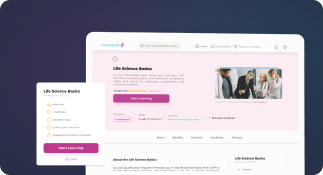Documentation Control
Definition
Documentation Control refers to the systematic management of documents to ensure accuracy, integrity, accessibility, and compliance throughout their lifecycle. In the pharmaceutical and life sciences industries, documentation control is a critical component of Quality Assurance (QA) and Good Manufacturing Practice (GMP) compliance. It involves the creation, review, approval, distribution, revision, storage, and archiving of controlled documents.
Detailed Explanation
Documentation control is essential for maintaining the integrity and traceability of processes, procedures, and data in regulated environments such as pharmaceuticals, biotechnology, and medical device manufacturing. It ensures that only the most current and approved versions of documents are in use, thereby reducing errors, ensuring consistency, and supporting regulatory compliance.
Purpose and Importance
In regulated industries, documentation is not just a record—it is proof of compliance with regulatory standards such as FDA 21 CFR Part 11, EU GMP, and ICH Q10. A robust documentation control system helps organizations:
- Ensure that only authorized personnel can create, modify, or approve documents.
- Track document revisions and maintain version control.
- Facilitate audits and inspections by providing traceable and retrievable records.
- Prevent unauthorized access or use of obsolete documents.
- Support training and onboarding by ensuring staff access the correct procedures.
Components of Documentation Control
- Document Creation: Drafted by subject matter experts (SMEs) and aligned with regulatory and company requirements.
- Review and Approval: Documents must be reviewed and approved by QA and relevant departments before release.
- Version Control: Each document version is uniquely identified and tracked.
- Distribution: Controlled copies are distributed to designated users or departments.
- Change Control: Any updates require formal change control procedures.
- Archiving: Obsolete versions are archived but remain retrievable for audit purposes.
Types of Controlled Documents
Controlled documents are those that must be managed under documentation control systems. Common examples include:
- Standard Operating Procedures (SOPs)
- Work Instructions
- Batch Manufacturing Records (BMRs)
- Validation Protocols and Reports
- Training Records
- Quality Manuals and Policies
Document Management Systems (DMS)
Modern documentation control is often supported by electronic Document Management Systems (eDMS), which automate workflows, enforce user permissions, and ensure compliance with electronic records regulations. Features of a compliant DMS include:
- Audit trails for all document activities
- Electronic signatures compliant with 21 CFR Part 11
- Automated version control and notifications
- Secure access controls
- Integration with training and quality systems
Documentation Control in Regulatory Context
Regulatory bodies such as the FDA, EMA, and WHO emphasize the importance of documentation control in their guidelines. For instance, the FDA’s 21 CFR Part 211 requires written procedures for production and process control, and mandates that these procedures be followed and documented. Similarly, EU GMP Annex 11 outlines requirements for computerized systems used in document control.
Best Practices
- Establish a document hierarchy (e.g., policies > SOPs > work instructions).
- Assign document owners and define review cycles.
- Train all staff on documentation procedures and compliance requirements.
- Regularly audit the document control process for effectiveness.
- Ensure backup and disaster recovery plans are in place for electronic systems.
Example in Practice
In a GMP-compliant pharmaceutical facility, an SOP for cleaning procedures must be approved by QA, version-controlled, and distributed to production staff. If the SOP is revised, the previous version is archived, and training is provided on the new version. During an FDA inspection, the company must provide evidence of the current SOP, training records, and the change control documentation that led to the revision.



